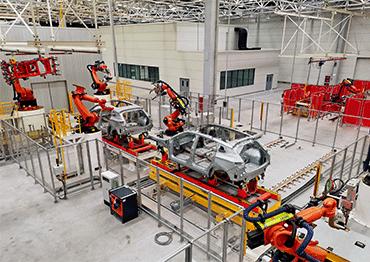Starting in 2020, an increasing number of EV manufacturers in China have declared or are on the verge of bankruptcy, including Bordrin, Byton and Qiantu, all based in Jiangsu, and SD EV based in Henan Province. Many NEV companies had starry launches with funds from big tech and management connected to prominent names in auto manufacturing, including foreign firms like BMW, or in the case of JSAT, Steve Saleen, a former racing driver and designer.
Li Jinyong, deputy director of the China Auto Dealers Chamber of Commerce, told our reporter that an industrial reshuffle in the sector is unavoidable. Generally speaking, NEV enterprises have a relatively small and weak industrial chain, but traditional auto enterprises have advantages in economies of scale which are based on an output of over 10 million vehicles.
“The production costs of NEV enterprises are still too high,” Li said. “It would be nice if three or five NEV enterprises could survive.”
Nowadays, NEV enterprises are no longer highly sought after in the capital market especially after a continued reduction in government subsidies. Zhang Wei, chairman of Co-Stone Capital, argued that no NEV enterprise in China is worthy of investment.
Whether NEV enterprises can survive or not largely depends on support from local governments, who have become the largest source of finance for the NEV sector. Auto industry analyst Zhong Shi told our reporter that NEV enterprises deliberately bind themselves with State assets and shoulder risks with local governments. If there is a problem, he said, it is very difficult for State assets to retreat.
In June, Nanjing Byton Electric Vehicle Corporation said it was experiencing a crisis which reportedly meant a four-month delay to salaries. In April, its office in Shanghai was closed and in June its office in Beijing shut. Its factory in Nanjing, capital of Jiangsu, closed because of arrears in utilities.
“We have invested billions of yuan into the Byton project. If it’s declared bankrupt, it will be a great burden to repay the debt,” an employee at the management committee of Nanjing Economic and Technology Development Zone said, on condition of anonymity.
Local governments mainly invest in land and factory buildings, so if a business fails, these means of production can be reused. Cui Dongshu said that it is the bank that suffers most. “The investment comes from banks, and there is a high likelihood it will become a bad asset,” he said.
Several auto industry insiders told our reporter that it is difficult for local governments to appraise the technological credentials of NEV enterprises. To make matters worse, local governments lack awareness of risk control and most of the time studying the feasibility of a joint-venture project is a formality.
Jiangxi Province was criticized by the National Development and Reform Commission (NDRC) due to excessive investment in the NEV industry. From 2015 to 2017, Jiangxi introduced 18 NEV projects but some never even started production. Eleven did start, but seven are behind schedule.
Xia Yingjie, chairman of Jiangxi Jiangling Motors Overseas Sales Company and a member of Jiangxi Political Consultative Conference, warned that most NEV enterprises in the province have weak financial backing and R&D. It is high time to raise the entry threshold for NEV enterprises, Xia said, and their design capability, manufacturing quality and marketing capacity must be subject to strict oversight in order to avoid overcapacity in low-end products.
On January 10, 2019, the NDRC issued an investment regulation on the NEV industry which states that before a new project is launched, local governments should eliminate all zombie enterprises in the sector, and existing enterprises should accomplish the scheduled output. In addition, NEV enterprises should have core technologies in design, manufacturing and battery production. The NDRC also delegated the power of examination and approval of NEV projects to the provincial government.
Jia Xinguang, chief analyst at China Automobile Industry Consulting, argued that the delegation of power has pushed provincial governments to balance NEV development in accordance with the specific circumstances of different cities and their strengths.
“In previous years, local governments’ attitude towards NEV projects was the more, the better. Nowadays, provincial governments tend to support one or two key projects,” he said. “If a project fails, the NDRC is quite likely to end all NEV projects in the province.”

 Old Version
Old Version


